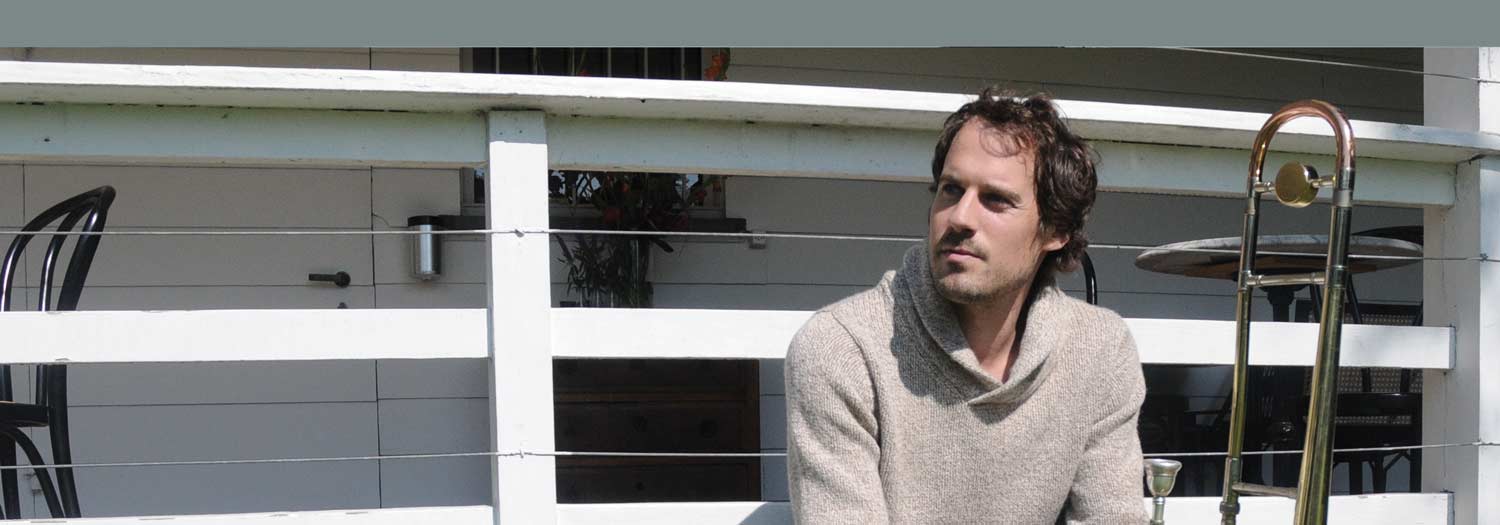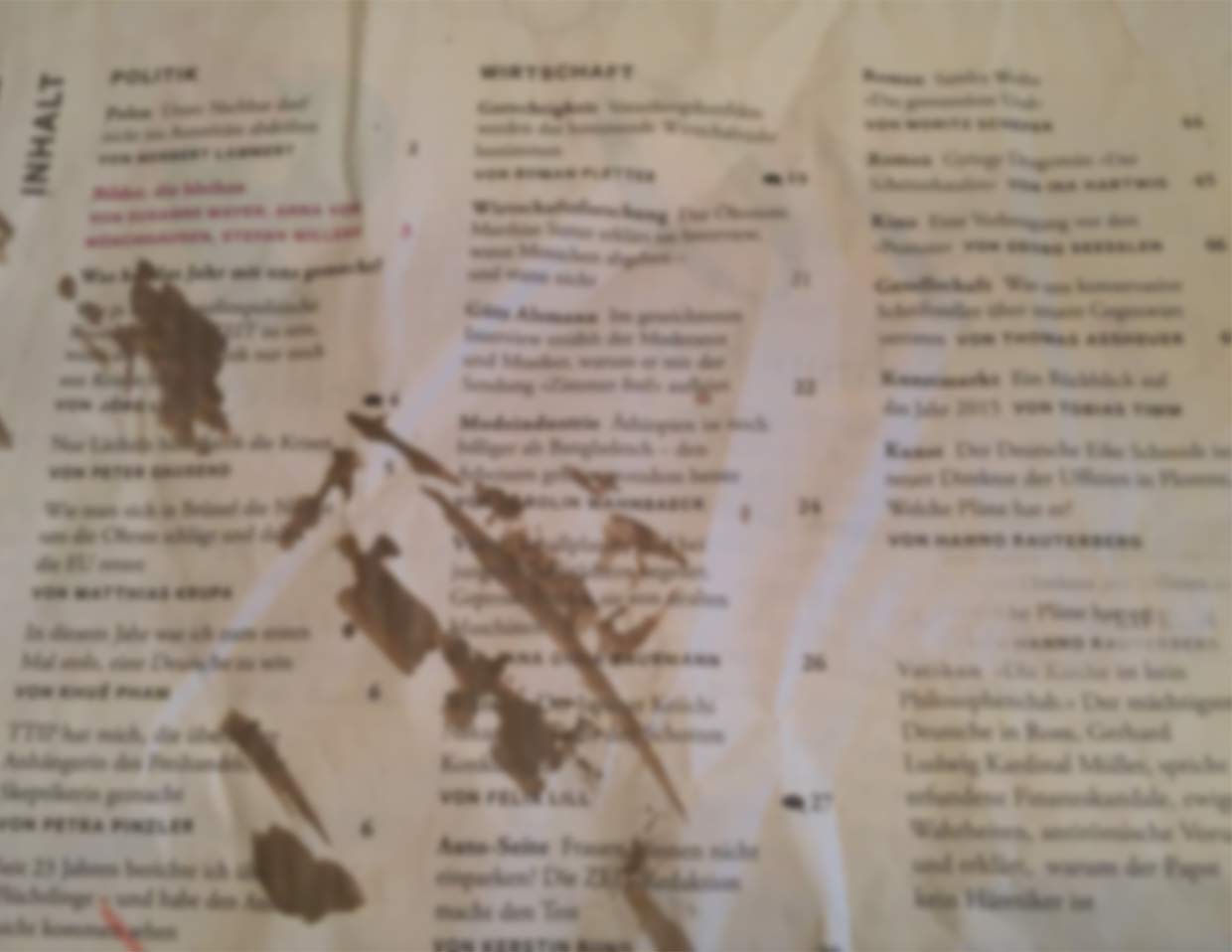Nils Wogram
Root 70
NILS WOGRAM trombone
HAYDEN CHISHOLM alto sax
MATT PENMAN bass
JOCHEN RÜCKERT drums
Vertigo Trombone Quartet
NILS WOGRAM trombone
ANDREAS TSCHOPP trombone
BERNHARD BAMERT trombone
JAN SCHREINER trombone
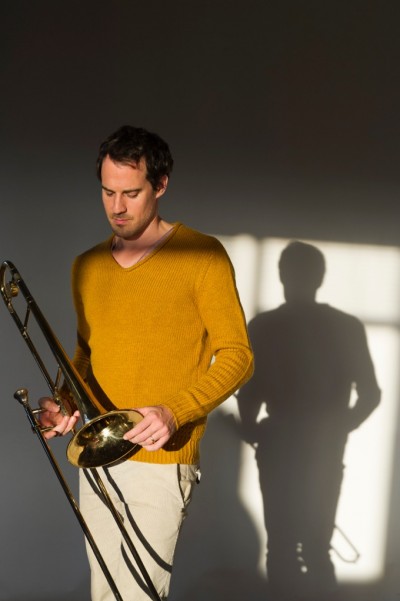
Nostalgia
NILS WOGRAM trombone
ARNO KRIJGER hammond, pedals
DEJAN TERZIC drums
Muse
NILS WOGRAM trombone
KATHRIN PECHLOF harp
HAYDEN CHISHOLM alto sax, overtone singing
GARETH LUBBE vionlin, viola, overtone singing
New album: Vertigo Trombone Quartet – OPENNESS
(Release September 2024)
2022: German Jazz Award Album Instrumental for “MUSE” | Prix Du Musicien Europeén
2021: Honorary Award of the German Record Critics | Swiss Music Prize
On Tour – available dates
Vertigo Trombone Quartet: September 20 – October 6, 2024 (album release tour) | May 4-11, 2025
Nostalgia Trio: October 18 – 31, 2025 (album release tour)
Root 70: November 12-24, 2024 | April 1-12, 2025
Vertigo Trombone Quartet
Can a pure trombone quartet be entertaining and amusing without losing itself in the abysses of popular folk music? It can. With its third album “Openness”, the Vertigo Trombone Quartet with Nils Wogram, Jan Schreiner, Andreas Tschopp and Bernhard Bamert shows that the trombone can be fun, and four times trombone can be fun to the power of four.
The album title says it all. This album is characterized by an incredible lightness, sophisticated cheerfulness and unconditional openness in all directions. This is not to say that the music is not sophisticated and virtuosic. On the contrary. But Wogram speaks of a charming source of error that one must be able to allow. He also calls it a healthy perfectionism. Now this attitude is very rare in modern jazz, and strictly speaking “Openness” is not a jazz record at all, although all four participants are socialized and associated with jazz. What is described as improvisation in other contexts amounts here to a cheerful blurriness that has a lot to do with joie de vivre. After all, who wants to plan precisely where their path will take them on a warm spring day?
Even on the last album of his long-term formation Root 70, Nils Wogram displayed a relaxed attitude that is not typical of either contemporary jazz or the trombone. And as the synchronicity of events often plays out, Tschopp, Bamert and Schreiner have arrived at exactly the same level of serenity. Four friends, who never run out of things to talk about, meet in a pleasant situation and simply start talking about whatever comes to mind. No one is the spokesperson, no one wants to be right or take center stage. And yet everyone gets their say with their attitude, their ideas and their urgency (to stay with the image of the trombone).
At no point is it about what you can do with four trombones. It could just as well be four guitars, accordions or jew’s harps. It’s simply about participating in an honest dialog. The focus is on good stories, which are only told on four trombones because all four protagonists are trombonists. “We’ve gone through a process as a band since our first album in 2014,” confirms Nils Wogram. “In the beginning, we started with the message that we would overcome the difficulties that the instrument brings with it. On the third album, we can look back in a relaxed way and let go. Of course, we all have very different approaches. This time we did it in such a way that each piece is designed by the respective composer. They also have the right of veto if they don’t like something. But despite this diversity, it wasn’t difficult for us to find a common line from the outset.”
Of course, a lot of work and heart and soul goes into an album like this, especially as it combines so many different approaches. But once the songs have passed through the floodgates of laboriousness, you can no longer hear the effort. The effortlessness of this music is infectious from the very first note. The focus clearly shifts from instrumental technique and the playing possibilities on the instrument to pure music. This is playing in the most original sense of the word, with an open outcome. What was the album title again? All four Vertigo trombonists have audibly matured, but at the same time have become much more playful. “At some point, you are taken back to the excitement of those days when you picked up the trombone for the very first time,” says Andreas Tschopp, describing this unconditional playing feeling. “Suddenly, skills from a time when I didn’t have any technical mastery of the instrument come to the fore again, but I really like them again today. This suddenly makes the spectrum much richer again.”
It is precisely this spectrum that manages without any terminology. Yes, four trombones first and foremost suggest JAZZ, perhaps even new music, but with this program the quartet can also ignite storms of enthusiasm at any roots music or jam rock festival. Ballast that the four musicians have been carrying around with them for decades is thrown off unsentimentally. Bernhard Bamert even emphasizes: “For a while I didn’t listen to jazz at all, only classical music, and folk music is actually an important reference point for me.” People cannot be categorized, and the consistently inclusive claim of the album title is reflected in the music in an enchantingly magical way. The recording situation played a decisive role in the mood of the album. “We all went to Bremen together and lived in this studio like an apartment and cooked together,” recalls Andreas Tschopp. “For me, the whole process was like a school trip. It was a very low-threshold way of recording. We didn’t have the feeling that we had to go into the studio super well-rehearsed and deliver perfection, but we were together in the house, ate upstairs and then went downstairs, made music, and someone recorded it. It was a spontaneity like that of original folk music. The whole album is a snapshot.”
Strictly speaking, “Openness” is a live album. The mood conveyed in the music reminds us that “live” is nothing other than a translation for “alive”. On “Openness”, a multitude of melodies, timbres, moods, artistic attitudes, individual preferences and constellations within the group come to the fore. Nothing is defined, everything is open. The four trombonists succeed brilliantly not only in freeing themselves from all expectations, but also in pulverizing every expectation of the listener.
According to Tschopp, Wayne Shorter once said that the opposite of fear is not fearlessness, but openness. On this album, not only does each member with their individual characteristics find an adequate place, but also every listener can settle into the songs, regardless of where their musical socialization is located. In this respect, “Openness” is more than just a piece of music. “Openness” is a real pick-me-up. A utopia at exactly the right time.
Some moments seem chamber music-like, others tend more towards jazz or ambient, if one wants to orient oneself towards such genre fixed points in the topography of sounds at all. Moreover, comparisons of a trombone quartet like Vertigo with string, guitar or saxophone quartets are doomed to limp before they even learn to walk. The Vertigo Trombone Quartet is neither the World Saxophone Quartet nor the Kronos Quartet. From the very beginning, the question was how the quartet would go its own way.
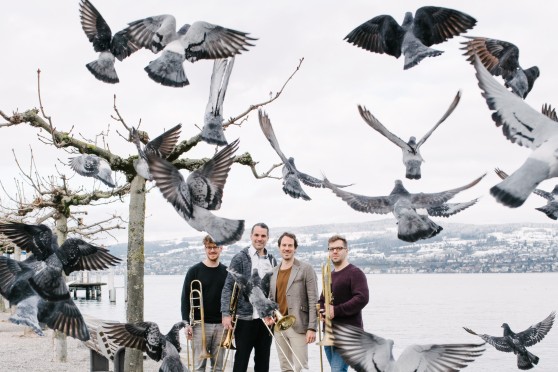
Ultimately, Wogram, Bamert, Tschopp and Schreiner have decided against stylistic definitions. The four musicians move with the greatest possible freedom within the open framework they have genuinely created for themselves. No other instrument is as similar to the human voice as the trombone. You can make something out of it. The chorus of four blowpipes produces unexpected intermediate tones and overtones. Some are reminiscent of strings, others of keyboards or percussion, especially as tuba, melodica and subtle percussion are also used. At some moments you even think you are listening to a full big band.
By simultaneously accepting the limitations of their instrument and expanding the spectrum of its possibilities, the four great musicians end up making the best music that music can be.
MUSE
All or nothing! No half measures! Where in the course of many other artists’ careers routine wear and tear becomes apparent, in Nils Wogram the realization matures that every new project is also his first project. This is particularly noticeable on his new CD “Muse”, recorded with harpist Kathrin Pechlof, violist and overtone singer Gareth Lubbe and Wogram’s long-term companion Hayden Chisholm on saxophone. But why start over again with a completely new band when the trombonist has achieved everything a jazz musician can achieve with working bands such as Root 70, Nostalgia or the Vertigo Trombone Quartet and alongside Aki Takase, Simon Nabatov, Bojan Z, Michel Portal and many others? The answer is as simple as it is complex: because Nils Wogram simply cannot help but give in to his impulsive artistic curiosity and, regardless of everything he has achieved, see what is waiting for him beyond the horizon.
And so everything about “Muse” is actually completely different from what we are used to from Nils Wogram and his circle. The only constant remains Hayden Chisholm, a musician who has fully shared the trombonist’s obsessions for decades and who, despite his willingness to take risks, always gives him a bit of support, not only musically but above all as a person. Wogram has also played with Kathrin Pechlof from Berlin and Gareth Lubbe from South Africa in various fields, but there has never been a line-up like the one on “Muse” and it is probably unparalleled in music history. The visionary, who never searches just for the sake of searching, but whose goal is to “find” without any compromise, is all the more motivated to make the impossible possible and the unheard audible.
Nils Wogram’s music has always been characterized by a great sensuality. While he has celebrated the sensuality of the moment in almost all of his projects to date, the sensuality of the lasting comes to the fore on “Muse”. Lingering in the form plays a major role in the chamber music feel of this constellation. The warm sounds are sometimes reminiscent of the portraits of Amadeo Modigliani, which are frozen into still lifes. To stay with the image, the compositions on the album imagine less the leaf that moves lively in a spontaneous gust of wind, but rather the vase that adorns a room in its once-created form and plays with the light. “There are also improvised passages on ‘Muse’,” Wogram notes, “but they are much less influenced by jazz, which is of course very much down to the protagonists. I already knew when I was composing who I would be working with and where their strengths lay. I harmonized this with my musical ideas. The future will show to what extent these musical forms are permanently fixed or will continue to develop. I don’t know at the moment.“
How could it? After all, the Muse project is only just beginning with this CD. This unagitated openness to all the possibilities that can arise from what has just begun is easily transferred to the listener. The music may be complex, but its intrinsic beauty and friendliness, for all its formal rigor, is also enormously relaxing for the listener. “Muse” is a quiet album. Every note counts. Sound is the decisive component. “Allowing this quiet, sensual music to exist without questioning from the outset whether it would work in the form of a CD or live performance was a priority for me,” says Wogram. “I simply like this aesthetic. But it can only work if I implement it consistently. For me, consistency is directly related to clarity. Music with a strong mood always releases strong emotions.“
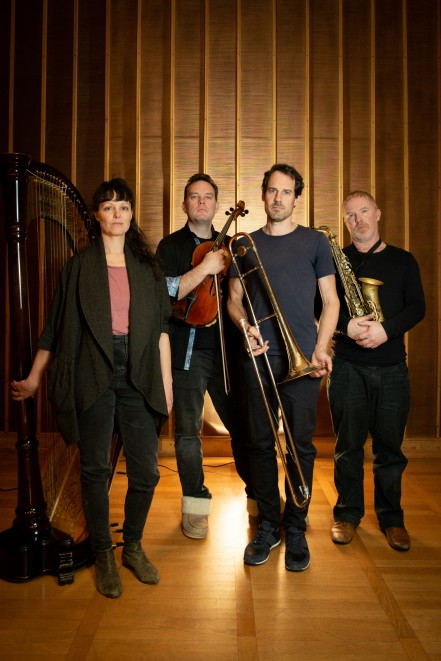
The constellations and transformations in the compositions of “Muse” are as diverse as the incidence of light at different times of day. The individual sounds permeate each other with such transparency that it is not always possible to say exactly whether it is harp or viola, or where do the multiphonics on the trombone begin and where does Lubbe’s overtone singing end? Chisholm’s saxophone runs through these plays of sound light like a spirit that constantly mediates between physicality and intuition. The harp, a very quiet instrument, to whose level all other sound sources must, or are allowed to, engage, sets the timbre. For the first time in the long history of his music, Wogram has recorded an album sitting down in order to engage with the demands of the harp from all sides. Kathrin Pechlof, on the other hand, soaks up the input from the trombone, saxophone, viola and voice in her thousand and one strings. This almost fairytale-like harmony is the basis, not the result of playing together. In this way, it is also easy to listen to the four participants listening to each other from the outside.
In ancient mythology, the muse is a figure who unites the divine principle of creation within herself and passes it on to people. The fables of great artistic personalities and their muses fill entire compendiums. Nils Wogram, Kathrin Pechlof, Hayden Chisholm and Gareth Lubbe, however, do not need a personified source of inspiration to join forces in the service of the muse of music. Their tone poems without lyrics are full of poetry and show one thing above all: all beginnings are easy!
Solo
A trombone, nothing else! What has long been the norm on the piano or guitar, for example, still seems unusual, not to say daring, on the trombone. Yet this unusual constellation has a long tradition in German jazz. Albert Mangelsdorff and Conny Bauer have led the way and presented their instrument as a solo instrument on several style-defining albums and countless solo concerts. With his solo debut “Bright Lights”, Nils Wogram not only continues this great tradition, but also opens up completely new perspectives.
Nils Wogram has not had to prove his musical ability for a long time and it was only a matter of time before Wogram would also postulate his relationship to the solo trombone. Unlike the pioneers of this subject, Albert Mangelsdorff and Conny Bauer, he no longer has to position his instrument in the club of solo instruments, but can simply play it.
He doesn’t have to prove anything, he doesn’t need to unravel the playful possibilities of the trombone and its improvisational derivations song by song, but can cheerfully and entertainingly blow his very own stories through the reeds. Although Wogram relies on a single sound source without any technical aids or extensions, his artistic maxim is just as integrative as when playing with a large band. Any form of dogmatism is fundamentally alien to him. “Bright Lights” is about incorporating as many creative means as possible and not about excluding, omitting or even preventing certain parameters. “I certainly didn’t want to fall into the trap of complacency. The listener shouldn’t constantly have in mind that they are hearing nothing but trombone. It’s about interesting and varied music.“
In order to diversify the narrative qualities of his horn as much as possible, he delves much deeper into the trombone’s bag of tricks than before. The question of the respective creative means for each individual song always took center stage. This narrative aspect lends itself more to the trombone than to any other instrument, because no sound generator comes as close to the human voice as Wogram’s instrument. He is aware of these possibilities and uses them as an opportunity. “The character of the trombone is extremely changeable. I like it when the trombone retains its basic character. Of course, I often succumb to the tendency to play the trombone as purely as possible, but its charm lies not least in its certain roughness and linguistic changeability.” Wogram also deliberately plays with the limitations of the instrument. As if in free flight, he overcomes the gravity of the trombone, but instead of negating it, he skillfully transforms its relative sluggishness in the buoyancy of musical thermodynamics into a flying carpet from which his stories fly over to the listener as lightly and elegantly as swifts. This makes his playing airy, colorful and three-dimensional. He is not interested in his personal standing as a player or virtuoso. As in all his other projects, his ego takes a back seat to the music, which in turn makes him all the stronger as an individual musician.
As demanding as this solo album is in terms of playing, Wogram’s album is not aimed exclusively at trombone gourmets, but at listeners of all kinds who simply enjoy musical fabulousness. In this sense, “Bright Lights” is neither an acrobatic revue of numbers nor a showcase for the trombone and certainly not a retrospective showdown with his role models Mangelsdorff or Bauer, to whom Wogram certainly considers it a challenge for the album to bow down. He sums up his credo in a very simple sentence: „I am not interested in analyzing my craft, but only in artistic substance.“
Nils Wogram succeeds in a touching way in manifesting basic trust in his own musical statements, in acknowledging his artistic origins without mutating into plagiarism, and thus in telling new stories that nevertheless do not seem out of place in familiar settings. Ultimately, with his solo program “Bright Lights”, he makes a strong break for the creative power of socially sensitive individualism in times of increasing uniformity and conformity.
Root 70
A strong tree has many roots. The jazz band Root 70 will celebrate its twenty-fifth anniversary in 2025. They owe this to a whole series of facts. Trombonist Nils Wogram, saxophonist Hayden Chisholm, bassist Matt Penman and drummer Jochen Rückert form one of the most stable formations in jazz history. Making music for two decades with an unchanged line-up is not only remarkable in itself, but in the case of Root 70 it is particularly impressive because the band has not chosen the easiest path. But let’s start at the beginning, when four young musicians decided to travel a part of their path together.
To keep it simple: Hayden Chisholm and Matt Penman come from New Zealand and have known each other from an early age. Chisholm came to Cologne via Switzerland as a teenager. Around the same time, Nils Wogram returned from New York to the conservatory in Cologne, where he met Chisholm and Jochen Rückert. The latter had already played independently of the saxophonist in New York with Matt Penman. Rückert played drums in Wogram’s quartet, and when the trombonist asked the drummer who he would like to play bass with, he chose the New Zealander from New York. Meanwhile, Chisholm played with Rückert and Penman in a trio and one evening in 1999 invited Wogram as a guest. “It was the first time the four of us had played together in this combination, and I said, this concentration of people is something special, we have to do this for longer than just one gig,” recalls Wogram.
It is one thing to express such a fundamental insight, but it is quite another to not only put it into practice, but to work with it continuously. Nils Wogram put on his hat and forged a band from four musicians who were musically very close to each other, a band that would function according to Alexandre Dumas’ principle of “one for all, all for one”. “It always takes one person to catalyze things and get to the point,” says Wogram. “We knew each other from various musical contexts and learned to appreciate each other. But it’s like a family. You respect each other, but it’s not all agreement. Everyone has their own mind. We don’t have to be best friends and always want the same thing. One of the things that has made the band work for 20 years is that each band member can fully develop and shape the band’s sound through their own playing style.“
In May 2000, Root 70 gave the first concert under this name at the MoersFestival. It is unusual that four personalities, who are such strong individualists not only on their instruments but also as musical characters, nevertheless achieve a highly symbiotic band sound. The four protagonists feel connected to each other through a similar musical value system and are committed to a comparable basic aesthetic. So the common ground was there, you didn’t have to look for it. But Root 70 managed to do something that few bands manage to do for so many years. The group builds the tension of its concepts on the contrasting nature of the musicians, which constantly results in new overlaps, breaks, changes of perspective and convergences. Each of the four has found his own place in the band, which is flexible and takes account of personal differences. If it were otherwise, the salt in the soup would be missing.
Root 70 never had a master plan or a formulated dream. In purely musical terms, the band wanted to achieve a kind of sophistication. They wanted to translate their skills as musicians into music with character that wasn’t just well played. “We were serious in realizing our ambition, but we didn’t want to take ourselves too seriously. The content was always in the foreground. It was important to us to surprise the audience.”
Last but not least, Root 70 also succeeded in constantly surprising themselves with new concepts. Which brings us to another point in the band’s internal survival strategy. After the first three albums, the band switched to concept albums, for which Wogram cites two reasons. “Avoiding arbitrariness gave us a conceptual framework that didn’t allow us to digress eclectically. This focus was helpful when composing and programming. The other reason was the precise engagement with a theme. We didn’t just want to scratch the surface, we wanted to go into depth. We were interested in the question of how freedom can be explored and found within certain boundaries.“
While Cologne was initially a kind of epicenter for Root 70, there is now a great distance between the musicians. Wogram lives in Switzerland, Chisholm in Ireland, Rückert and Penman in New York. Logistically, this poses challenges that are not always easy to overcome, but the former spontaneity of meeting up is now replaced by an unconditional will to harmonize even over long distances.
What brought the four musicians together in the beginning still connects them today. Root 70 is more than a musical institution, a success story documented on eight albums. Root 70 is a utopia that has become a reality, a reconciliation of opposites without corrupting the individual claim of each part of the whole.
![]()
Nostalgia Trio
The fact that Wogram masters Albert Mangelsdorff’s instrument, the trombone, with such virtuosity and daring as hardly anyone else of his generation in the world, contributes to his reputation as the pioneer of contemporary jazz “Made in Germany”. His trio Nostalgia takes the opposite approach: back to the swinging and grooving jazz feeling of the 50s and 60s of the last century, when jazz was still at home at Blue Note or on 52nd Street, brilliantly mastering the balancing act between a nostalgic retro sound and the curious testing of their own sound structures. Wogram succeeds in conveying an authentic attitude to life in the shortest possible way, without having to provide a musical instruction leaflet or a marked hiking map. He simply sets off and takes the listener with him. Nostalgia carries a colossal force of life to the listener.
The selection of his fellow musicians contributes a great deal to this. Since jazz organist Arno Krijger plays the bass pedally, he takes over the chords with his left hand and melodies and improvisations with his right. On this basis, Wogram can build the pieces differently. But he also appreciates another quality in Krijger. “Arno is not an organ-playing pianist, he only plays the organ. His self-image gives the organ tonal nuances that are an absolute gain in terms of content.” Wogram not only appreciates drummer Dejan Terzic’s intuitive feel for beat, groove and fire, but above all his sensitivity to dynamics and form.
Touching or impressing – that is the question that counts on “Things We Like To Hear” (released in October 2019), the trio’s fifth album. Wogram, Terzić and Krijger make it easy for the listener. With a binding Dub-Melody they start relaxed into an album whose lightness they maintain in the following eight songs. They leave out everything that can be left out and concentrate on the essentials. Wogram has shown often enough that he knows how to implement complex ideas, but now he is taking a new path. Instead of abstraction, the three musicians rely on simpler structures, without becoming banal, and on undisguised emotionality that needs no explanation.
Despite all the innovations, the album still bears the unmistakable signature of Nostalgia. But in contrast to the trio’s earlier albums, on “Things We Like To Hear” Wogram no longer asks the question of where we come from, but from the perspective of the present: What is there to preserve from the past? “For me, the timeless components of jazz are spontaneity and improvisation. And the simpler the structures are, the more spontaneously you can improvise on them.”
However, he himself is not nostalgic, either as a musician or as a private person, and this also applies to his two partners. All three live in the here and now and want to take part in developing the music further. Wogram does not need a title for this. He evades all reflexes and expectations, neither wanting to provoke nor to preserve, but only wants to make what he and his fellow players themselves are longing for heard. Some of the melodies on “Things We Like To Hear” simply capture moods, others encourage you to move or hum along, others may remind you of a good old film noir. His aim is to bring intellect and body together. “Things We Like To Hear” is the next step in this direction.
Nils Wogram is a musician who keeps his ears open and captures the world as it is with his horn. With Nostalgia and “Things We Like To Hear”, he once again goes over the top, not because he wanted to start from scratch, but because everything that has been said needs no repetition.
Nils Wogram (* 1972 in Braunschweig) began playing the trombone at the age of 15. He enjoyed classical and jazz training at the same time. At the age of 16, he was already a member of the German National Youth Jazz Orchestra, founded his own bands and won prizes at the Jugend musiziert competition. From 1992 to 1994 he studied in New York and graduated from the Cologne University of Music in 1999. Since then, Nils Wogram has released over 30 albums under his own name. In 2010 Nils Wogram founded his own label nwog-records on which he releases his albums. Nils Wogram’s bands exclusively play his own compositions. He also frequently receives commissions from other ensembles. A selection of the jazz awards he has received: SWR , Norrhein Westphalen, City of Cologne, Abendzeitung Munich, Julius Hemphil Competition , Frank Rosolino Competition, GEMA Prize for Jazz Composition, BMW Jazz Award, Jazz Echo, Albert Mangelsdorff Prize 2013. tours through: Europe, Russia/Siberia, Australia,South and Central America, Central Asia South East Asia, USA, Canada. Some festival highlights: Moers, Triennale Cologne, Willisau, North Sea, Molde, Madrid, Lisbon, Vilnius, Prato, Wangaratta, Bishkek, Saalfelden, La Paz, Lima, and many more.
Arno Krijger (*1972 in Terneuzen, NL) with his typical Hammond organ style and his versatility on the instrument, has not only traversed the broad spectrum of jazz, where he is perhaps best known, but also moves through the worlds of funk, pop and alternative music. Because of his distinctive playing (also with the pedals), Krijger can be heard as a sought-after sideman on numerous albums by artists in almost all musical genres. He has been influenced stylistically by Larry Young and Larry Goldings. Krijger has toured and worked in the studio with artists such as Billy Hart, Stefan Lievestro, Hans van Oosterhout, Pascal Vermeer, Toine Thys and James Scolfield.
Dejan Terzic (* 1970 in Banja Luka, BIH) moved to Nuremberg with his family when he was three years old and learned the piano from the age of six. He switched to the drums at the age of twelve. From 1990, he studied at the Nuremberg Conservatory and then went on to study with Bill Elgart at the Würzburg University of Music. In the meantime, he deepened his studies in New York City with Bill Stewart and Duduka da Fonseca, among others, and at the Vermont Jazzcenter with Jimmy Cobb and Attila Zoller. Since then he has been a sought-after sideman (with Dusko Goykovich in the quintet, Enrico Rava, Johannes Enders, among others) and has also successfully pursued his own projects (including Underground, Melanoia). He has been a lecturer in percussion at the Bern University of the Arts since 2008. In 2014, Dejan Terzic received the ECHO Jazz award for best national drummer.
![]()
Duo mit Bojan Z.
Two men, one word! Some stories write themselves. They are inevitable and have to be written for the very simple reason that they would otherwise remain unwritten. And that is not possible. One such story is the duo of the French-based Serbian pianist Bojan Zulfikarpasic, Bojan Z. for short, and the Swiss-based German trombonist Nils Wogram. Europe squared, yes, but much more than that.
When the two musicians performed together on stage for the first time at the Jazzdor Strasbourg Berlin festival in 2012, it was a shockingly natural experience. There were two musicians who had intuitively found a common narrative level, not because they had to make an effort, but because this playground was simply there. It sounds so trite to say that they had sought and found each other, but that’s exactly how it was. If ever two musicians have actually played the moment, without concept, ambitions and other frippery, but to tell each other and the audience as unpretentiously as possible what they had to tell each other at that very moment, then it is these two.
The interplay between the two still functions like a collection of stories that condense into a novel on a higher level. Both Wogram and Zulfikarpasic have a tendency towards productions that – each in their own way – are always very complete. To the holistic overall impression of their interplay is added a component of casual openness, into which the listener can enter with all his imagination.
Wogram and Zulfikarpasic have acquired a sharpness of detail that not only makes one forget which impulse emanates from the piano and trombone, but in whose pleasurable logic principles such as improvisation and composition cancel each other out.
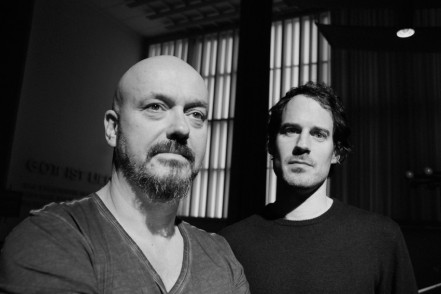
Ultimately, everything is composed, only – to stay with Wogram’s soccer comparison – the routes to the respective composition are very different. Sometimes the compositions are composed full-on from the game, at other times they are rehearsed standard situations that have been carefully prepared by the two musicians and composers. In the end, a successful invention no longer asks for directions. Wogram speaks of special moments that could not be created ad hoc. Together they survey a panorama whose horizon extends far beyond the musical. This is precisely why they succeed so well as player personalities in stepping back behind their pieces and simply telling the story.
„He always finds magic even in conventional playing situations,” says Wogram, describing his duo partner’s approach. “It’s probably simply down to his personality.” Zulfikarpasic also returns this observation to Wogram almost verbatim. From the pianist’s point of view, there is only one point where the two differ. “Nils was incredibly well prepared. I, on the other hand, delivered everything at the last minute. In that respect, he’s just so German, and I’m so Balkan.” So it’s good that there are still differences. However, you can’t hear them on “Housewarming”.
![]()
His first solo recording is entitled “Bright Lights” and is neither an experimental work of noise and effects nor a tableau of technical bravura. (…) The music (…) is full of subtleties in detail, full of stylistic quotations that appear in melodic twists and turns, and shows a musician who has both feet firmly planted in jazz history with a commanding overview. A step backwards? Not at all. The music denies, avoids nothing and is enormously rich. It goes beyond itself in surprising details and shows possibilities that are not always realized. “Bright Lights” is not expansive and transgressive. Rather, it is an album of self-reflection and self-positioning: a great jazz musician takes the liberty of marking his place in the history of music without false modesty. In the midst of a bright light.
FRANKFURTER RUNDSCHAU
Wogram´s phrasing is flawless and it feels as though there is no barrier between what he imagines and what he plays. (…) If you imagined yourself as a great jazz trombonist, this is how you´d want to sound.
LONDON JAZZ NEWS
(…) leads his genre out of the retro trap. Drawing from the well of tradition, connected with the curiosity for discovery like an intrepid seafarer – this is what characterizes Nil Wogram’s work. … Wogram thinks … in long arcs. This doesn’t only apply to his soli, breathtaking in the truest sense of the word, but also and above all to the musical, interpersonal relationships in which he moves.
DIE WELT
Nils Wogram is the dominant musician in this (Nostalgia) trio. His captivating way of phrasing melodically and with a long breath; his large, elegant arches, structured by concise rhythmic arrangements; the enormous technical degrees of difficulty that he casually takes on in his solos or even in the thematic material; his finely nuanced, usually rather soft and lyrical tone and the narrative style of his playing – all this makes him the favorite musician of all those in the room who grew up with Albert Mangelsdorff and appreciate a complete, confident jazz trombonist with an awareness of tradition and a highly original compositional profile. This has little to do with nostalgia. This music is far too refined and far too present for that.
FRANKFURTER RUNDSCHAU
The fact that (…) he would have had a lot to celebrate is also due to the fact that the 47-year-old is probably not only Germany’s best jazz trombonist (…), but probably also the most hard-working. (Root 70) is still the best way to hear what makes Wogram so special: Expanding the language of jazz without forgetting its roots and traditions. Root 70’s CDs, most of which were conceived as concert albums, have already dealt with blues and bebop, standards and quarter tones, but always with an avant-garde approach focused on odd meters or elements foreign to jazz.
SÜDDEUTSCHE ZEITUNG
Finally a solo album by Germany’s finest trombonist. What rhythm, what colors(…)
DIE ZEIT
